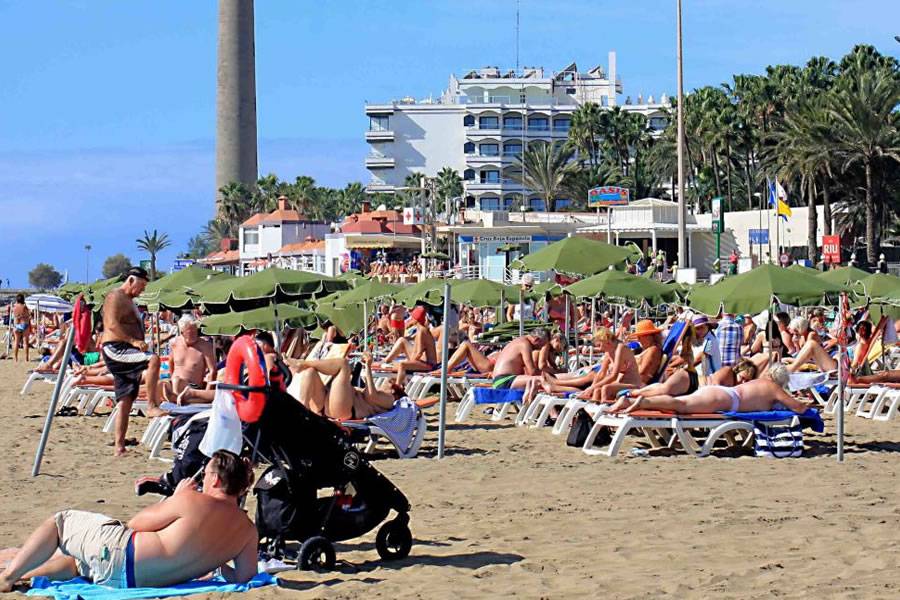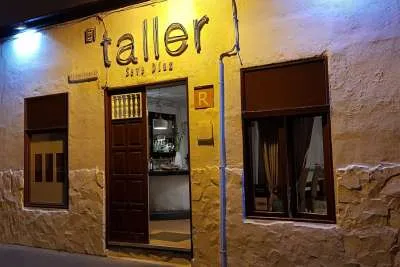The Canary Islands has 38.8 million overnight stays in the first half of 2022
- 22-07-2022
- Business
- Canarian Weekly
ISTAC (Canary Institute of Statistics) have revealed that that there have been 38.8 million overnight stays in tourist accommodation in the first half of this year, which is 17.5% down on pre-pandemic figures for 2019, the reference year for comparison since the industry was hit by Covid.
In addition to overnight stays, other indicators of interest contribute to making the close analysis of tourism, show clear signs of being on the way to recovery. Thus, in terms of number of people that have stayed in tourist establishments in the Canary Islands during the first six months of 2022, there have been a total of 5.9 million people, which is still -11% compared to the same period of 2019, which closed with 6.6 million.
Regarding accumulated income, this first half of the year registered a total of 1.82 billion euros throughout the Canary Islands, down 2.5% compared to the 1.87 billion euros of the same pre-pandemic period.
This figure, although still negative, is the indicator that performs best in relation to the other two indicators, i.e. travellers staying and overnight stays, which translates into an increase in the average expenditure made per head. This is shown by the fact that with 700,000 fewer tourists in this period compared to 2019, revenues are barely 47 million less.
Comparison by islands:
El Hierro is the island with the best indicators compared to the first half of 2019 in terms of travellers staying (+7.7%) and accumulated income (+36.3%), even though it did not exceed overnight stays in 2019 (-2.23%).
Total income is also positive in Lanzarote (+5.2%). Both islands experienced similar behaviour in the analysis of the first quarter of 2022.
In the rest of the islands, these three tourism indicators still reflect negative behaviour. The worst data is recorded by La Palma, which is unsurprising as they are still suffering from the harsh effects of the pandemic and a volcanic eruption.
They have had a fall in overnight stays this semester of -57.9% compared to the same period in 2019, although this fall is less by at least 7 points than the first quarter of the year.
La Palma is followed in the drop in overnight stays by the island of La Gomera (-28.8%), Gran Canaria (-25.6%), Lanzarote (-13.5%), Tenerife (-12.9%) and Fuerteventura (-11.7%). All of them have experienced lower falls in the second quarter than in the first quarter of the year.
With regard to staying travellers, the trend is the same as in overnight stays in six of the seven islands of the Archipelago: only El Hierro improved its data and registered an increase of 7.7% compared to the first half of 2019, although it tempered the growth experienced in the first quarter.
The islands of Fuerteventura (-3.4%) and Tenerife (-7.3%) registered the least pronounced falls, while La Palma (-40.6%), La Gomera (-30.9%), Gran Canaria (-16.5%) and Lanzarote (-11.3%) complete the rest.
In relation to the income accumulated in accommodation establishments by islands, to the positive data of El Hierro (1.51 million, +36.3%) is added Lanzarote (315.9 million, +5.2%). They are followed, with the least pronounced falls, by Tenerife (693.9 million, -0.7%) and Fuerteventura (246.5 million, -1.8%); La Gomera, with 14.9 million, experienced a fall of -14.8% and La Palma, which entered 11.1 million, registered a decrease of -46.7%.
Finally, regarding occupations by vacancy in June, the average throughout the Canary Islands was 63.8%. The island with the best average occupancy was Lanzarote (74.2%), followed by Tenerife (65.6%), Fuerteventura (61.7%), Gran Canaria (57.9%), La Palma (45.04%), La Gomera (41.1%), and El Hierro (27.9%).
These average occupancy rates improve on the islands of La Gomera, El Hierro, Gran Canaria and Lanzarote compared to June 2019; in the rest of the islands, they were worse.
Other articles that may interest you...
Trending
Most Read Articles
1.
Featured Videos
A Vision of Elvis Tenerife Promo
- 10-05-2025
TEAs 2025 Highlights
- 17-11-2025

























































